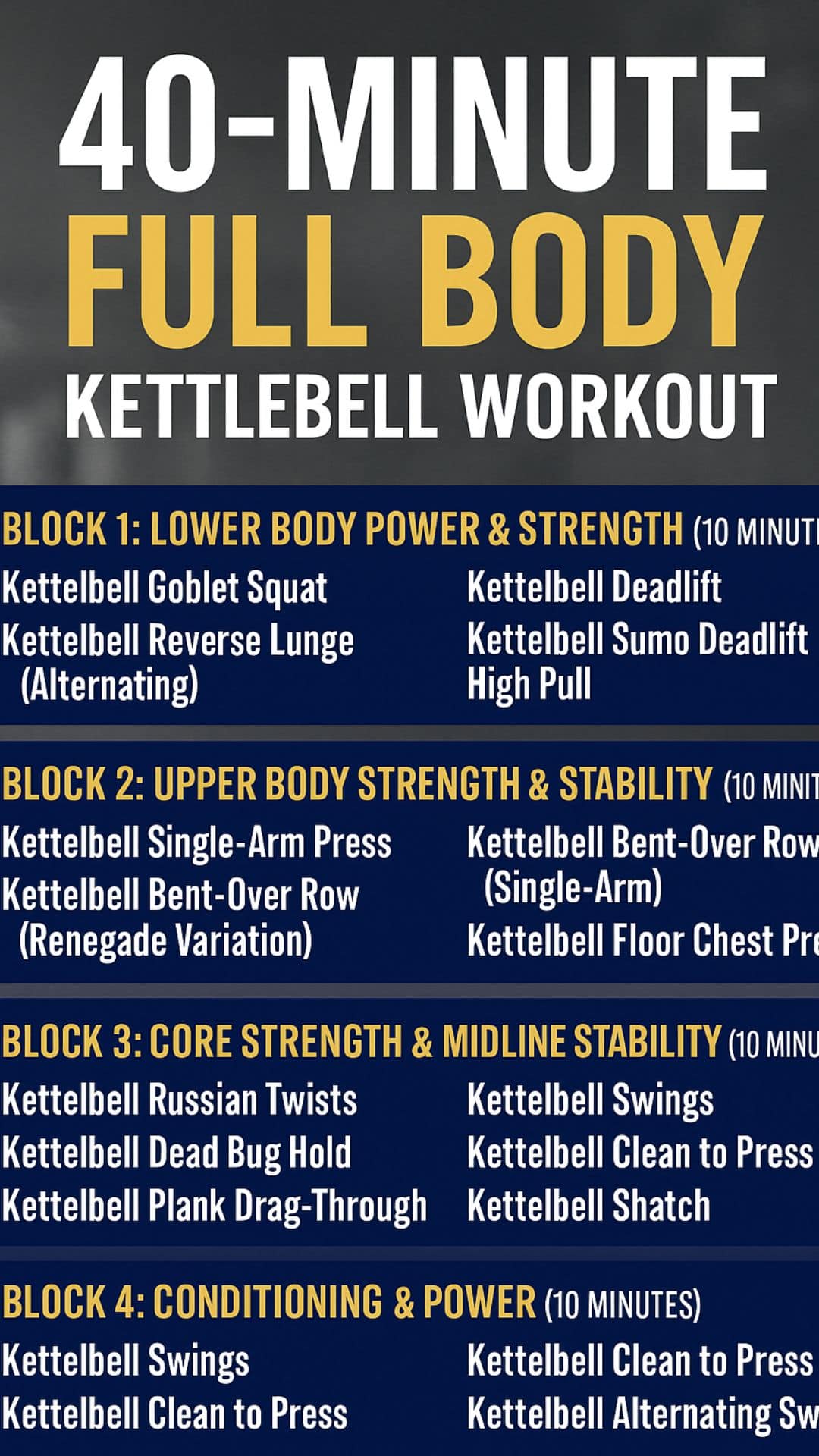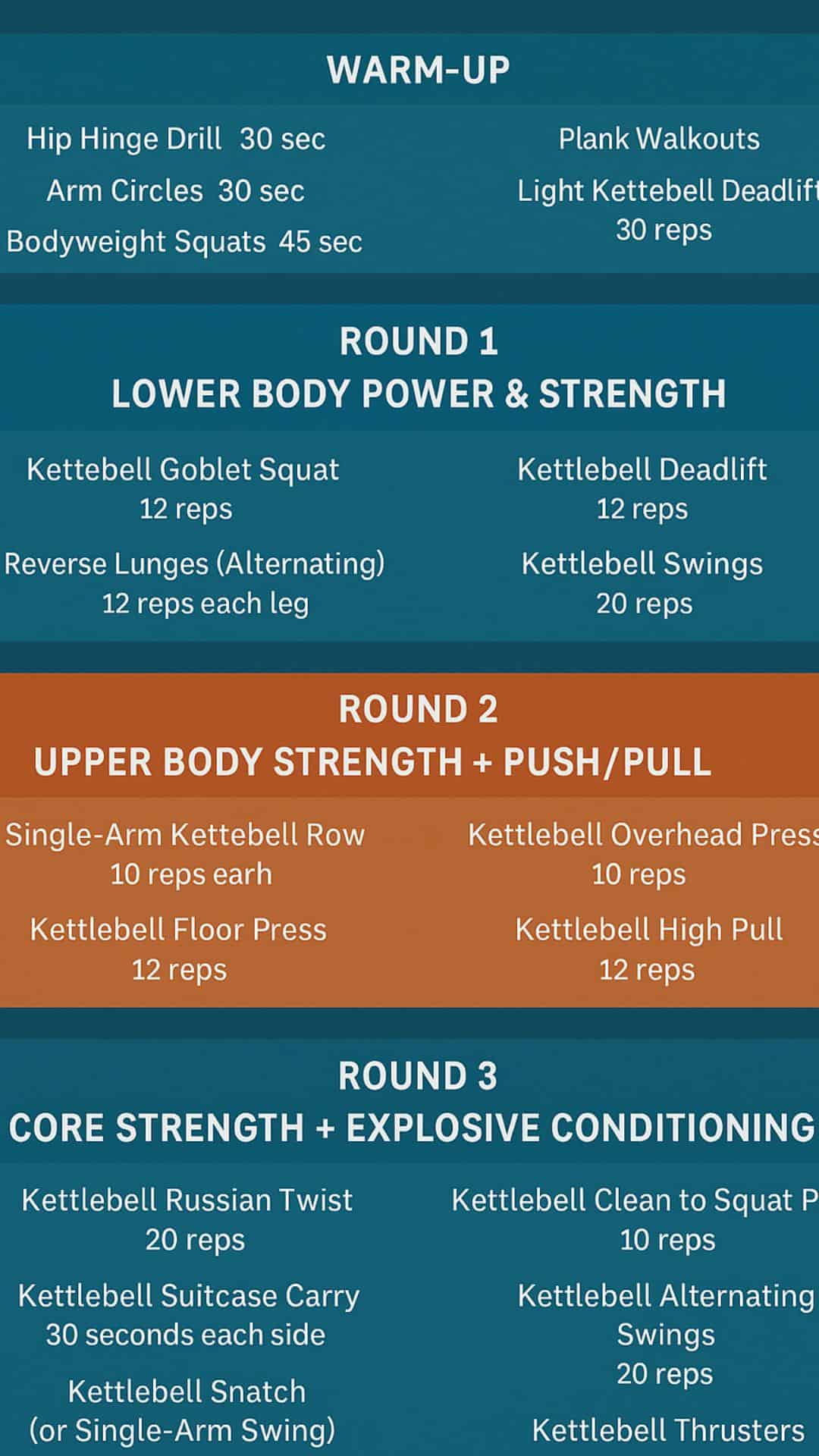
45 Minutes to Fit: A Full-Body Kettlebell Workout for All Levels

40-Minute Full-Body Kettlebell Workout (Build Muscle, Burn Fat)

30-Minute Kettlebell Workout for Total-Body Strength

25-Minute Full Body Kettlebell Workout for Strength & Fat Loss
Pre-Exhaust Training For Bigger Pecs

Pre-exhaust training is a specialized approach designed to maximize muscle hypertrophy and strength, particularly in targeting the chest area. This technique involves performing an isolation exercise to tire out a specific muscle group before moving on to compound movements that engage the same muscles. The rationale behind pre-exhaust training is to push the target muscle to fatigue, ensuring it becomes the limiting factor in the subsequent compound exercise, thus leading to increased muscle size and strength. In this post, we will delve into effective pre-exhaust training exercises tailored for those aiming to achieve a bigger more defined chest.
Understanding Pre-Exhaust Training
The Philosophy Behind Pre-Exhaust Training
The core idea of pre-exhaust training lies in the strategic fatigue of a muscle group to ensure it reaches its maximum potential during a workout. For the chest, this means engaging the pectoral muscles fully before involving other, less fatigued muscles in compound exercises. This strategy can help overcome the challenge of secondary muscles giving out before the target muscles have been fully worked.
Benefits of Pre-Exhaust for Chest Development
Pre-exhaust training can offer several benefits for chest development:
- Enhanced Muscle Activation: Isolating the chest muscles before engaging in compound exercises can increase muscle fiber recruitment.
- Overcoming Plateaus: Changing your training regimen with pre-exhaust techniques can help break through growth plateaus.
- Balanced Muscle Growth: It ensures that the chest muscles are thoroughly worked, promoting more balanced and proportional muscle growth.
Key Pre-Exhaust Exercises for a Bigger Chest
Flyes (Isolation Exercise)
Cable Flyes
Begin your chest workout with cable flyes to isolate and pre-exhaust the pectoral muscles. This exercise allows for a wide range of motion and constant tension throughout the movement, making it an ideal pre-exhaust choice.
Dumbbell Flyes
Dumbbell flyes are another effective way to target the chest muscles directly. By performing dumbbell flyes on a flat or incline bench, you can focus on the stretch and contraction of the pectorals without the triceps becoming a limiting factor.
Presses (Compound Exercises)
Bench Press
After pre-exhausting the chest with flyes, move on to the bench press. With the pectorals already fatigued, they will have to work harder, even though the shoulders and triceps are also engaged in the movement. This can lead to deeper muscle fiber activation and growth in the chest.
Incline Bench Press
Incorporating the incline bench press targets the upper portion of the chest. Following pre-exhaustion with flyes, this variation ensures comprehensive engagement of the upper and middle pectoral fibers, promoting a fuller chest development.
Implementing Pre-Exhaust Training into Your Chest Routine
Sample Pre-Exhaust Chest Workout
- Cable Flyes: 3 sets of 12-15 reps (Isolation)
- Flat Bench Press: 4 sets of 8-10 reps (Compound)
- Dumbbell Flyes: 3 sets of 12-15 reps (Isolation)
- Incline Bench Press: 4 sets of 8-10 reps (Compound)
Tips for Maximizing Results Pre-Exhaust Training
- Focus on Form: Ensure proper technique in both isolation and compound exercises to maximize chest engagement and minimize injury risk.
- Controlled Movements: Pay attention to the eccentric (lowering) phase of the exercises for increased muscle tension and growth.
- Adjust Intensities: Balance the weights and repetitions between the isolation and compound exercises to maintain the effectiveness of the pre-exhaust method.
Advanced Pre-Exhaust Training Techniques
Incorporating Supersets
Supersets can elevate the pre-exhaust training method to new heights. Pairing an isolation exercise immediately with a compound exercise can intensify the stress on the chest muscles, leading to enhanced muscle hypertrophy. For instance, executing a set of pec deck flyes followed immediately by push-ups allows for an intense workout session that deeply targets the chest muscles without rest in-between, amplifying the pre-exhaust effect.
Drop Sets in Pre-Exhaust Training
Drop sets involve performing an exercise to failure, then reducing the weight and continuing to work to failure again. This technique can be particularly effective in pre-exhaust training by applying it to the isolation exercise. For example, after reaching failure in a set of dumbbell flyes, quickly switch to lighter dumbbells to continue the set. This method ensures that the chest muscles are pushed beyond their usual limits before even beginning the compound exercises.
Additional Exercises for a Comprehensive Chest Workout
Machine Press
The machine press, either chest press or incline press, can serve as an excellent compound exercise following isolation work. Machines offer a stable and controlled environment, allowing for focused stress on the fatigued chest muscles while minimizing the involvement of stabilizing muscles and reducing injury risk.
Decline Bench Press
Incorporating the decline bench press targets the lower chest muscles. After pre-exhausting the chest with flyes, performing the decline bench press ensures that every part of the chest is engaged during the workout, promoting a balanced and thorough development.
Nutrition and Recovery
Fueling Muscle Growth
Muscle growth doesn’t just happen in the gym. Nutrition plays a crucial role in supporting your body’s ability to recover and grow stronger. Consuming a balanced diet rich in protein, healthy fats, and carbohydrates is essential for muscle repair and growth. Additionally, staying hydrated and ensuring adequate intake of vitamins and minerals can support overall health and performance.
Importance of Rest In Pre-Exhaust Training
Recovery is just as important as the workout itself. Pre-exhaust training is demanding and can lead to significant muscle fatigue. Allowing sufficient time for rest and recovery between workouts is crucial for muscle repair and growth. Incorporating rest days, focusing on sleep quality, and possibly engaging in active recovery or light cardio can aid in reducing muscle soreness and improving overall recovery.
Pre-exhaust training is a powerful strategy to enhance chest muscle development. By meticulously planning your workouts to include a mix of isolation and compound exercises, employing advanced techniques like supersets and drop sets, and focusing on nutrition and recovery, you can maximize for a bigger gains. Remember, the key to success with pre-exhaust training lies in consistency, intensity, and smart recovery practices.
Achieving a bigger, more defined chest requires dedication both inside and outside the gym. By adhering to the principles of pre-exhaust training, you’re not just working harder, but smarter, ensuring every workout moves you closer to your goals. Keep pushing your limits, and the results will follow.
Most Recommended
Subscribe to our Newsletter
Stay up to date on the latest men’s health, fitness and lifestyle trends and tips.
About Us
Men’s Fit Club was started with the goal of empowering men to get the most out of their lives. This meant going beyond exercise and diet tips to really address the broad range of issues that men face on a daily basis – topics like recreation, finding love, sexual health and even sound fashion advice.
Quick Links
© COPYRIGHT MEN'S FIT CLUB 2025. All Rights Reserved

